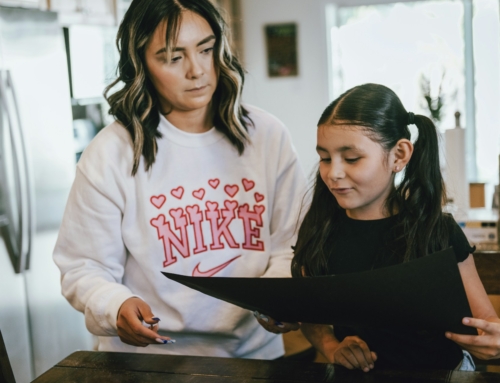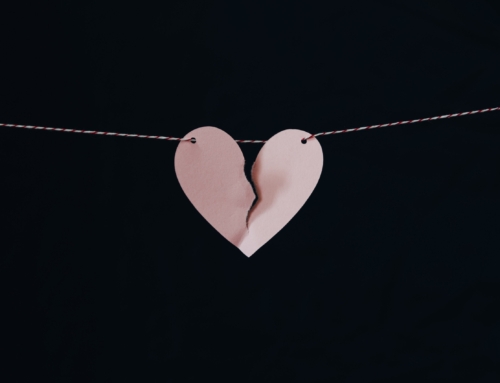When social media was born, it seemed harmless, as most babies do. Decorating a MySpace wall was basically an art form back in the day. You could let your creativity go wild with custom backgrounds and carefully chosen music. Glitter text added a little pizzazz, and GIFs ruled.
“Tom,” one of the MySpace founders, seen smiling in his profile, wearing a white t-shirt, was automatically added to your friends list upon signing up. Social interaction beyond that was highly encouraged and even praised, as your profile would automatically display who your “Top 8” friends were. And the biggest stressor was trying to weed out “fake” accounts and remembering your password.
But times have changed. What was once an innocent tool is now often used as a weapon. And what was once a connector is now frequently an instrument of division and a source of stress for many of its users. Notifications demand constant attention; posts invite comparison, and the pressure to appear perfect online can weigh more heavily than in any real-life interaction.
Bullying and passive-aggressive social jabs reign as the platforms make the bullies feel safe or even anonymous. In other words, social media and texting can be used as a toxic tool that can spark a fire of anxiety.
Where it Started
Social media was invented to simply be a place to keep in touch with friends and distant family members (and to make money, of course). It was used as a place to organize your photos and share them with loved ones. It was also a designated space to post random thoughts or communicate in bulk. Over time, those same features that used to bring connection and joy have been twisted into toxic stressors.
A New Etiquette
Social media today comes with a whole new unspoken code of behavior that didn’t exist back in the good old days of MySpace, when posting and liking were pretty straightforward. Today’s users are expected to read between the lines of every interaction because every little, seemingly innocent interaction can carry weight now.
 A simple “like” used to mean acknowledgment or approval, but today it can also be seen as social signaling (showing alignment with a group, person, trend, or opinion), flirting, or even passive aggression, depending on the context. And trying to figure out exactly what the follower intended by their simple click of a button is like decoding a secret message.
A simple “like” used to mean acknowledgment or approval, but today it can also be seen as social signaling (showing alignment with a group, person, trend, or opinion), flirting, or even passive aggression, depending on the context. And trying to figure out exactly what the follower intended by their simple click of a button is like decoding a secret message.
Texting and instant messaging also come with their own set of unspoken, yet universally expected, rules. Getting left “on read” can be taken as a sign of disinterest or even rejection, whether it was intended that way or not. If you respond too quickly, you might appear to be overly eager, too attached to your phone, or someone who simply has “no life.”
Conversely, if you wait too long to construct your reply, you might be labeled as distant or aloof. And if you double-text? Then you’re considered desperate. Even the tiny typing dots, the ones that signal that someone is composing their reply, can send a message if they linger too long.
Social Media Weaponized
Because the way that we communicate has changed, so has the way that social media is used. Long gone are the days of using social media simply to connect. Now, social media can be weaponized and used for nefarious purposes.
Posting photos used to be for capturing memories, but now it can often be used to communicate a message, subtle and not so subtle, as to who belongs in a group and who doesn’t. Posting about a party or “hangout” that someone else wasn’t invited to can be a passive-aggressive way to “break up” with a friend.
Leaving someone out of a group photo, tagging certain people while ignoring others, or posting inside jokes can make the excluded person feel unwelcome or even targeted, all without a single word ever being spoken.
Comparisons
Along with the evolution of social media has come the evolution of social media tools. Most people no longer post their raw, untouched photos like they did back in the days of MySpace. Today, your feed is now full of filtered and “Photoshopped” images. Faces are flawless with no blemishes or visible pores. Hair is perfectly coiffed, and bodies are manipulated to feature thinner waistlines and whiter teeth.
These flawless images have been accepted in society for decades as advertisements. Their manipulation was obvious and expected, as flawless beauty has long been used to sell everything from beauty products to food to houses. But now they are showing up on social media, where there is an assumption of reality.
And it’s not just filtered and edited photos that feed into a cycle of comparison. People also post about their thrilling vacations, perfect new houses, their remodeled kitchens, their big promotions, and even their “perfect” family outings. And if you don’t have those same things (and have little hope of ever getting them), those innocent images on the screen can carve incredibly large holes in your heart.
Soon, that trip to Europe you couldn’t afford seems much more desirable, and that dream home you’re saving for seems even further away. The smiling couple who never seem to fight looks like the standard, and you begin to focus on the reality of your own relationship as you gaze over at your partner with bed head and unbrushed teeth.
Pressure to Respond
 When these perfectly curated photos and staged, deliberate group photos are posted, you feel the pressure to acknowledge. Do you give it a like even if you weren’t invited? Does that make you look accepting and mature, or does it look needy and passive?
When these perfectly curated photos and staged, deliberate group photos are posted, you feel the pressure to acknowledge. Do you give it a like even if you weren’t invited? Does that make you look accepting and mature, or does it look needy and passive?
Choosing not to respond at all might also send the message that you’re angry instead of that you didn’t see the post at all. When a friend or frenemy texts you, you feel obligated to respond, sometimes pulling you into conversations and conflicts that you never wanted to engage in. Ignoring it isn’t the solution either because even your silence can be interpreted as something negative in the complicated modern world of social media.
Anxiety and Depression
With all the expectations, bullying, and pressure to perform that social media mandates, it’s no wonder that studies show a decisive association between increased social media usage and depression.
Scrolling through endless highlight reels of someone else’s “perfect” life and feeling compelled to respond to posts and messages intended to hurt you can make you feel like you’re not measuring up to society’s standards. Over time, the constant stream of comparison, pressure to change, and pressure to respond can chip away at self-esteem and cause anxiety or depression.
Therapy for Anxiety and Depression
Therapy can be a powerful counterbalance to the negativity and pressures brought on by social media. Having a space designated for exploring and unpacking feelings in a safe environment can help to ease the weight that social media places on your mental health.
Counselors are equipped to teach you how to set boundaries for your social media usage and how to find your identity in Christ, not measured in likes or comments.
Freedom Moving Forward
Social media has allowed people to manipulate or bully others without confronting them directly. Sharing posts, memes, unflattering photos, memes, or screenshots that mock someone, dropping cryptic status updates, or “liking” certain things to make a point are all indirect actions that can cause tension, anxiety, and feelings of being excluded. It’s become a way to assert power or influence emotions from a distance.
But God has a different perspective. He cares about your heart, not your social media profile. In a world where silence is misinterpreted and every action analyzed, God can provide a foundation that is unshakable and not reliant on friend groups, likes, filters, or whether you’ve been left “on read.”
God hears you even when you’re ghosted by a friend. He loves you even when you’re unfiltered, and He saves you even when you’re rejected by everyone you know. God wants to walk with you through your depression and anxiety. In a world where likes, texts, and posts can fuel anxiety or depression, the freedom found in God’s love offers peace that social media can’t provide.
Resources:
Association between Social Media Use and Depression among U.S. Young Adults, https://pmc.ncbi.nlm.nih.gov/articles/PMC4853817/
Photos:
“Woman With Phone”, Courtesy of A.C., Unsplash.com, Unsplash+ License; “Less Social Media”, Courtesy of Jon Tyson, Unsplash.com, CC0 License











